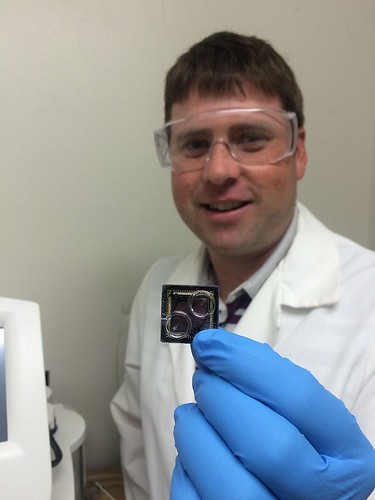
When a little brown bat discovered near North Bend, Washington, in March tested positive for White-nose Syndrome or WNS, scientists had a lot of questions.
The bat was found nearly 1,300 miles from the nearest confirmed case of WNS in eastern North America, so the most pressing question was about the strain of fungus causing this disease: was this a known strain of the WNS-fungus, was this an entirely new strain from elsewhere in the world, or was this the same clone of fungus that has been spreading throughout the eastern United States since 2006?
Forest Service scientists in Madison, Wisconsin, helped answer that question. They worked with other scientists from the U.S. Geological Survey’s National Wildlife Health Center to isolate and perform next-generation DNA-sequencing of the entire organism from the fungus found on the bat in Washington, as well as from multiple other strains of the fungus found in eastern North America and Europe.
Research Plant Pathologist Dan Lindner and Research Botanist Jonathan Palmer of the Forest Service’s Northern Research Station performed the sequencing and analysis of the DNA, discovering that the fungal strain in Washington matched the same strains of fungus that has ravaged bat populations in the eastern United States.
Lindner has been quoted saying that because of these scientific advances, information on biology, in the near future, could produce more information than many big-data generators such as YouTube or Twitter.
“It’s exciting to be in the biology field right now,” Lindner said. “Advances in the last five years have revolutionized our ability to quickly sequence and analyze vast amounts of DNA, which has created a renaissance of information. Obviously, it’s very satisfying for scientists to use new DNA tools to answer questions that can help determine how to manage and potentially offset the devastating effects of this disease.”
Lindner went on to say, “Bats are critical parts of our ecosystems, consuming vast numbers of mosquitoes and agricultural pests, so we are doing everything we can to understand and combat this disease.”
